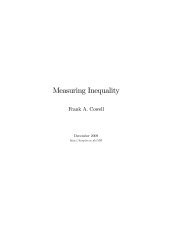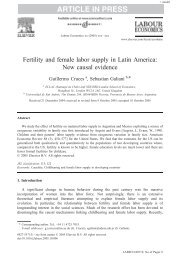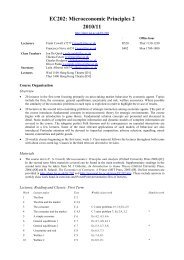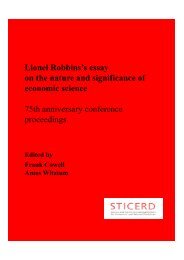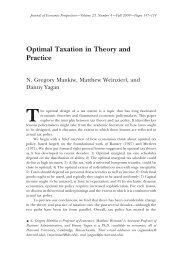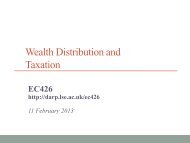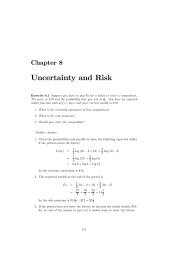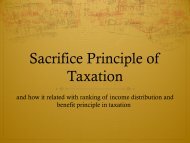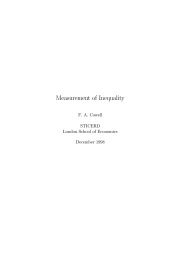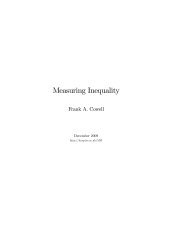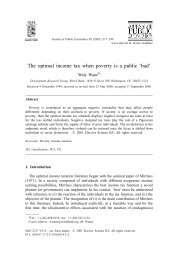Bayer, R.- C. and F. A. Cowell - DARP
Bayer, R.- C. and F. A. Cowell - DARP
Bayer, R.- C. and F. A. Cowell - DARP
Create successful ePaper yourself
Turn your PDF publications into a flip-book with our unique Google optimized e-Paper software.
Lemma 4 Any jointly optimal declaration vector satis…esn t (d) [f + t] nX= Cj( 0 j d j ); (15)j=1where (d) is the average audit probability (d) := 1 nnX j (d) : (16)Applying Lemma 4 in a symmetric environment where the gross pro…tsof all …rms are equal <strong>and</strong> the relative audit rule is symmetric shows thatunder these conditions the relative audit rule leads to the same declarationas a uniform …xed audit rule if …rms collude on declaration.Proposition 4 Let d ij denote the declarations of all …rms other than i<strong>and</strong> j. If i = 8i <strong>and</strong> d i = d j =) i (d i ; d j ; d ij ) = j (d i ; d j ; d ij ) 8i 6=j; d ij then the symmetric pro…le of jointly optimal declarations coincideswith d x , the declarations resulting from a uniform …xed audit rule.Proposition 4 gives a guideline of how a relative rule compares in termsof tax revenue to a …xed rule if …rms collude at the declaration stage. Whencooperating on tax returns …rms eliminate the externalities imposed by arelative rule. In this case the relative rule <strong>and</strong> the …xed rule lead to thesame outcome if the gross-pro…t situation is symmetrical.Some of the intuition underlying this result also applies to asymmetricindustries, where gross pro…ts di¤er across …rms: by Lemma 4 colluding…rms will always internalise the externalities created by the relative rule.But in the asymmetric case …rms can do more because they can exploit therelative rule to save some evasion costs. It is jointly optimal to distort thedeclaration of …rms with higher pro…ts somewhat upwards, while distortingthe declarations of low-pro…t …rms somewhat downwards, compared to theindividually optimal declaration under a …xed rule. This e¤ect is driven bythe increasing marginal evasion cost; so the shape of the evasion-cost curveis the principal factor determining whether collusion leads to higher or loweraggregate declarations. However, the precise result depends on the shape ofthe relative audit rule. The role of evasion costs is most clearly seen in thecase of a linear-symmetric rule – the simplest rule satisfying assumptions(D1)-(D4). In this casej=1@ i (d)@d i= @ j (d)@d j= c 8d; i 6= j (D5)19



